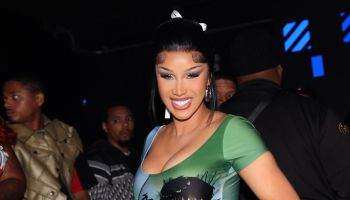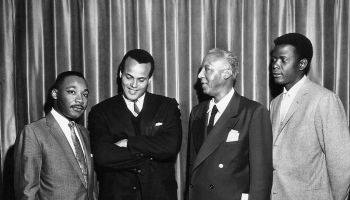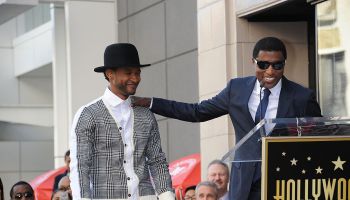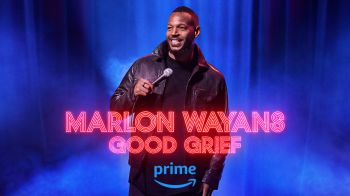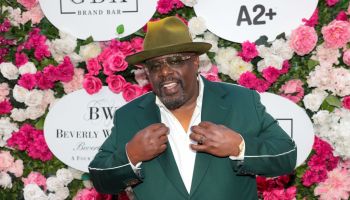There are very few ways to describe the emergence of Interscope Records in the early 1990s. The catchphrase that should be used is “lightning in a bottle”, meaning capturing something powerful and elusive and then being able to hold it to show the world. The label founded by billionaire Marshall Field scion, Ted Field and industry veteran, Jimmy Iovine in 1990 as an offshoot to Field’s Interscope Communications, started off with a major hit with their artist, Gerardo, and his smash single, “Rico Suave”.
The label again hit the mother lode with hot releases by Primus and Marky Mark and the Funky Bunch, which both went platinum respectively. With two out of the first three releases from them being a somewhat successful return on their initial investment, for their third release, Interscope looked to a young Oakland, Ca. rapper and sometimes actor to deliver them something much harder. This guy was the embodiment of the “lightning in the bottle” phrase and his name was Tupac Amaru Shakur.
Pac first debuted on Digital Underground’s single, “Same Song”, and was brought to Interscope by the group’s then manager, Atron Gregory, who would ultimately become his as well. He was eventually signed by Interscope/Eastwest/Atlantic Records under the direction of Tom Whalley. Pac, possessing an outsized personality, a controlled rage, and a poetic gift, was the right fit for the label’s next release.
Juxtaposed to what came before it, 2Pacalypse Now, was a deeply political album addressing Pac’s Black Panther Party roots and it described the everyday struggle of an African American male living in American society. Released November 12, 1991, the album moved slowly at first. Pac was being pulled many different ways at the time so it was hard for him to focus. Early in the album processes, Pac delayed the filming of the first video to be shot, “Trapped”, the morning of after a night of too much partying. He now had all the responsibility placed on his shoulders during the early goings and the start was rough.
By the time the single, “Brenda’s Got a Baby” started to gain a lot of steam, Pac and Interscope not only had a hit but a full blown movement surrounding him and the album. As the lp continued to make serious noise, a movie he filmed while simultaneously crafting it was getting ready to drop as well named, “Juice”. By the time “2Pacalypse Now” was certified Gold and “Juice” was a success, 2Pac’s aura was shining more brilliant than the sun. He was now a bonified star. With both the east and west coast heralding Pac as now being in the upper echelon of the rap game and with him considering himself at the top of the Interscope/Eastwest/Atlantic artist roster as well, he in turn also became the label’s top headache.
Pac saw the label as his personal bank(something most artists do). As his various legal troubles(shootings, assaults, etc.) began to grow by leaps and bounds, he looked to Whalley and Interscope to pick up the monetary slack. The label did just that but this arrangement began to take it’s toll on their partnership. Pac’s direct cash stream from doing shows had all but dried up because concert promoters were scared to book him. From his music being condemned by the then Vice President of The United States, Dan Quayle, or his volatile/unpredictable personality that could turn from day to night in a nanosecond, to the cost of security needed to protect Pac from the crowd or protect the crowd from Pac, made booking him to perform cost prohibitive. The lack of promoters meant the lack of funds for Pac so he was forced to rely on the various roles headed his way for income and label advances. Then two dates in late 1992 really slowed down his money stream both show and label wise.
November 19, 1992 saw the rise to a new sound in popular music and a shift in coastal power in the rap game when “Nuthin’ but a ‘G’ Thang” by Dr. Dre and Snoop Doggy Dogg dropped. If “Nuthin’…” was the battle, then December 15, 1992 ushered in the war. That was the day Dr. Dre’s album, “The Chronic”, was released. His first solo work for the new Death Row/Interscope imprint changed the way we hear music forever. As a result, Death Row became Jimmy Iovine and Ted Field’s top priority and leaving the rest of their artists on the back burner for the most part.
The more Death Row made hits, the more their demands(however crazy they may have been) were met leaving “table scraps” for others under the umbrella. Pac was one of those who definitely felt the pinch. By the time he was ready to release his second album, “Strictly 4 My N.I.G.G.A.Z, he felt the album’s promotional budget was not on par with his status as a proven talent and a movie star. Interscope’s energies were all centered towards Snoop Doggy Dogg, a major phenomenon at the time, so Pac’s album and legal troubles were something the label was not pressed with.
February 16, 1993 saw “Strictly…” release to a rousing success. Singles such as “Keep Ya Head Up” and “I Get Around” were major hits and are now anthems. Unfortunately, the Pac wave was against the Death Row Tsunami. The album was platinum but Pac felt as popular as the lp was in the streets, that it should reflect in the sales as well. He complained to the man that essentially signed him and was the executive he dealt with the most, Tom Whalley. Since he had stewarded Pac’s career from its inception, Whalley began to tire from his antics and informed him that Death Row would remain top priority. Pac seething with anger responded with, “F… Death Row!!!!” Pac felt betrayed as he was the one that believed in the label from the start enough to sign with them and felt he should be treated with more respect. Whalley informed him that it was what it was so Pac’s mission was basically forget Death Row and anyone/anything it stood for.
Spending a majority of his time on the east between filming movies and recording led Pac to coming across all walks of life. He was especially attracted to the fast life but was generous enough to give a “street urchin” the shirt off his back. He sometimes made less than stellar choices in company he kept and got caught up with someone that was not at all good for him. From his association with this shady character, Pac was eventually robbed, shot 5 times, and embroiled in a rape case for which he was ultimately convicted and this basically all at once! Pac still reeling from his near fatal wounds, a guilty conviction for a crime he did not commit, and overall paranoia, headed to prison with what he felt was no assist from his label which had just helped it’s other star, Snoop Doggy Dogg, out of a murder conviction. He did not understand why they would turn their back on him when he needed them the most. Pac headed upstate without knowing what the future held.
As he sat in prison he had a chance to reflect and reevaluate everyone and everything. Tom Whalley felt this was a another in a long line of Pac fiascos and their working relationship could not continue any further. The risk now outweighed the reward. So he devised a way to keep Pac under the Interscope umbrella, out of their coffers, and get him out of jail but be someone else responsibility. He then contacted Suge Knight, head of Death Row, and informed him of the situation to which Suge readily agreed. Suge saw this as getting one of the best in the business on his label for next to nothing and further expanding the Death Row brand/legend. Suge knew of Pac’s animus towards his label and went to the prison to inform Pac of the business at hand of becoming a free man but signed directly to Death Row. Once Suge showed him the door to freedom, Pac went from the guy screaming, “F… Death Row!” to “I F’s With Death Row!!!”. Thus, the legend is born.
By @ArtemusGordon on Instagram











